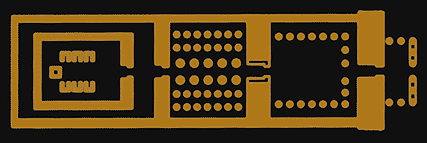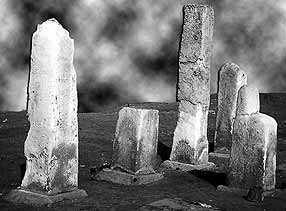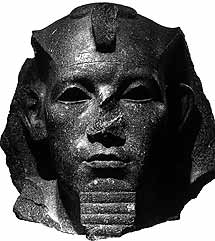 |
 |
 |
 |
 |
|

|
The Great Temple to Bast Due to the amount of damage suffered by the temple over the years it is not possible for an exact plan of the temple to be produced. However the basic plan of the temple would be:  The temple was originally 200 or 300m long, and was built from red granite. The entrance hall was built by Osorkon II, a Sed-festival hall and Hypostyle hall built by Osorkon III, a hall was later added by Nectanebo II.  Herodotus
described the temple when he visited the city in 5BC. He described
the temple was standing on an island with two water channels
running on its sides:
The Temple to Teti This temples is situated about 250m northwest of the Great Temple of Bastet. Its dimensions are 108m X 50m.
The Temple to Pepi I Although originally 87.5m X 64m, it contained a small square mud-brick temple to Bastet. Like much of the city this structure has almost entirely disappeared - all that now remain are two rows of pillars:  Jubilee Chapels The city also had 'jubilee chapels' (built to celebrate the sed-festivals) of Amenemhet III (12th Dynasty) and Amenhotep III respectively.  Burials at Bubastis There have been Old Kingdom burials, but the burials dating to the New Kingdom are better known due to the objects discovered. (People known to have been buried here include: Iuti - Vizier during the 19th Dynasty, Hori and Hori - father and son who were both held the office of Viceroy of Kush). In 1906 a burial hoard dating to the 19th Dynasty was discovered by local Egyptians - a gold lotus cup with the cartouche of Queen Tawosret, three silver jugs inscribed with the name of Atumemtaneb (the King's butler and King's messenger), and two bracelets of Ramesses II.
Cat Cemeteries To the north of the city are many vaulted brick cat cemeteries - these date to the 3rd Intermediate Period onwards. It is not known how many cats have been interred in these catcombs - but such was the popularity of the cat cult at Bubastis that it is estimated that the number of cat mummies could be in the millions. |
